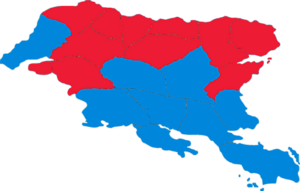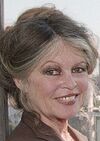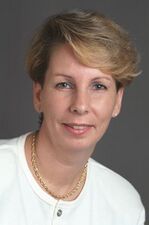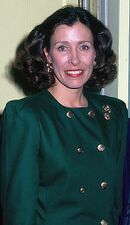Gylian presidential election, 1995: Difference between revisions
(Created page with "{{Infobox election | election_name = Gylian presidential election, 1995 | country = Gylias | type = presidential | vote_type = Final | elect...") |
mNo edit summary |
||
| Line 39: | Line 39: | ||
}} | }} | ||
''' | A '''presidential election''' was held in [[Gylias]] on 22 January 1995. | ||
Incumbent [[Anina Bergmann]] was re-elected, defeating {{G-NB}} candidate Senea Lieni. This was the only presidential election to coincide with a [[Gylian federal election, 1995|federal election]], as subsequent reform of the [[Gylian Parliament]]'s {{wpl|term of office}} stabilised the electoral calendar. | Incumbent [[Anina Bergmann]] was re-elected, defeating {{G-NB}} candidate Senea Lieni. This was the only presidential election to coincide with a [[Gylian federal election, 1995|federal election]], as subsequent reform of the [[Gylian Parliament]]'s {{wpl|term of office}} stabilised the electoral calendar. | ||
| Line 181: | Line 181: | ||
===Analysis=== | ===Analysis=== | ||
This was the only presidential election to fall on the same date as a [[Gylian federal election, 1995|federal election]]. | This was the only presidential election to fall on the same date as a [[Gylian federal election, 1995|federal election]]. The government adopted special regulations to alternate campaign days, but the concurrence still provoked fears that the presidential election would be overshadowed or affected by the federal one. This gave the presidential campaign something of a lower profile than usual. | ||
In the first count, incumbent [[Anina Bergmann]] slightly improved on her [[Gylian presidential election, 1991|1991]] performance, increasing her first preference vote by 1,6%. {{G-NB}} candidate Senea Lieni came second, with 20,5% of the vote and pluralities in four regions — although notably not [[Tomes Region|Tomes]], which she had been [[Regions of Gylias#Government|governor]] of, and where she came second | In the first count, incumbent [[Anina Bergmann]] slightly improved on her [[Gylian presidential election, 1991|1991]] performance, increasing her first preference vote by 1,6%. {{G-NB}} candidate Senea Lieni came second, with 20,5% of the vote and pluralities in four regions — although notably not [[Tomes Region|Tomes]], which she had been [[Regions of Gylias#Government|governor]] of, and where she came second. | ||
[[Alike Demetriou]]'s performance was a surprise, since she'd registered as a lark. Although her campaign was officially focused on {{wpl|cultural policy}}, it actually revolved around the playfully nostalgic persona she had perfected in her acting career. The knowingly elegiac tone of her campaign unexpectedly struck a chord amidst the atmosphere of national optimism and nostalgia for [[Groovy Gylias]], leading to a fourth place finish with pluralities on the western coast. She also took the role Moana had fulfiled in 1991 as the staunchly unilingual candidate. One popular campaign stunt was appearing in a segment of ''[[The Havomar Report]]'', in which she discussed her candidacy in {{wpl|Greek language|Hellene}} while her interviewer sagely nodded despite not understanding her at all. | Incumbent minister [[Ilona Stahler]] capitalised on the strong sympathy vote caused by [[Moana Pozzi]]'s death, finishing third overall with pluralities in [[Nezyál Region|Nezyál]] and [[Sváen Region|Sváen]] — although narrowly beaten by Anina in [[Mişeyáke Region|Mişeyáke]]. As the [[Gylian English|foresitter]] of {{G-LND}} after Moana's death, she was the only one to benefit from the simultaneous federal and presidential elections. | ||
[[Alike Demetriou]]'s performance was a surprise, since she'd registered as a lark. Although her campaign was officially focused on {{wpl|cultural policy}}, it actually revolved around the playfully nostalgic persona she had perfected in her acting career. The knowingly elegiac tone of her campaign unexpectedly struck a chord amidst the atmosphere of national optimism and nostalgia for [[Groovy Gylias]], leading to a fourth place finish with pluralities on the western coast. | |||
She also took the role Moana had fulfiled in 1991 as the staunchly unilingual candidate. One popular campaign stunt was appearing in a segment of ''[[The Havomar Report]]'', in which she discussed her candidacy in {{wpl|Greek language|Hellene}} while her interviewer sagely nodded despite not understanding her at all. | |||
[[Françoise Chatelain]]'s gains continued, with a 1,3% increase in first preference votes. She won pluralities in [[Arxaþ Region|Arxaþ]], [[Alţira Region|Alţira]], and [[Herlan Region|Herlan]], benefiting from the absence of an official [[Liberalism in Gylias|liberal]] candidate. [[Brigitte Nyman]] finished sixth, with a still respectable 10,4% of first preference votes and pluralities in [[Nauras Region|Nauras]] and [[Ḑarna Region|Ḑarna]]. She was the first candidate to be endorsed by the {{G-GP}}, which mainly focused on legislative elections, but her campaign was based on her signature issue of {{wpl|animal rights}}. | [[Françoise Chatelain]]'s gains continued, with a 1,3% increase in first preference votes. She won pluralities in [[Arxaþ Region|Arxaþ]], [[Alţira Region|Alţira]], and [[Herlan Region|Herlan]], benefiting from the absence of an official [[Liberalism in Gylias|liberal]] candidate. [[Brigitte Nyman]] finished sixth, with a still respectable 10,4% of first preference votes and pluralities in [[Nauras Region|Nauras]] and [[Ḑarna Region|Ḑarna]]. She was the first candidate to be endorsed by the {{G-GP}}, which mainly focused on legislative elections, but her campaign was based on her signature issue of {{wpl|animal rights}}. | ||
Revision as of 17:12, 4 July 2022
| |||||||||||||||||
| Turnout | 94,5% | ||||||||||||||||
|---|---|---|---|---|---|---|---|---|---|---|---|---|---|---|---|---|---|
| |||||||||||||||||
 | |||||||||||||||||
| |||||||||||||||||
A presidential election was held in Gylias on 22 January 1995.
Incumbent Anina Bergmann was re-elected, defeating National Bloc candidate Senea Lieni. This was the only presidential election to coincide with a federal election, as subsequent reform of the Gylian Parliament's term of office stabilised the electoral calendar.
Procedure
The election was held through instant-runoff voting.
Candidates were registered with Elections Gylias in accordance with normal procedures. They could either be nominated by a political party or electoral bloc, civic organisations, or self-nomination as independents.
Candidates
| Candidate | Nominator | Office(s) held | Details | ||
|---|---|---|---|---|---|
| Anina Bergmann | 
|
Progressive Alliance | President of Gylias (since 1991) |
Campaigned as the main leftist candidate. | |
| Senea Lieni | 
|
National Bloc | Governor of Tomes (1982–1990) |
Campaigned as the main conservative candidate. | |
| Ilona Stahler | 
|
Love, Nature, Democracy | Minister without portfolio with responsibility for sexual hygiene (since 1994) |
Campaigned on promotion of free love and sexarchism. | |
| Alike Demetriou | 
|
Independent | None | Campaigned on promotion of the arts and culture. | |
| Françoise Chatelain | 
|
OMFLG–ACFEN | None | Campaigned on promotion of francité. | |
| Brigitte Nyman | 
|
Animal Protection Party–Green Party | None | Campaigned on promotion of animal rights and environmentalism. | |
Results
| Candidate | Nominator | First count | % | Final count | % | |
|---|---|---|---|---|---|---|
| Anina Bergmann | PA | 2.419.450 | 22,7% | 4.889.548 | 51,2% | |
| Senea Lieni | NB | 2.184.966 | 20,5% | 4.660.351 | 48,8% | |
| Ilona Stahler | LND | 1.684.022 | 15,8% | |||
| Alike Demetriou | Independent | 1.492.172 | 14,0% | |||
| Françoise Chatelain | OMFLG–ACFEN | 1.481.513 | 13,9% | |||
| Brigitte Nyman | APP–GP | 1.108.470 | 10,4% | |||
| Others/write-ins | 287.776 | 2,7% | ||||
| Total | 10.658.370 | 100% | 9.549.899 | 100% | ||
| Registered voters and turnout | 11.473.752 | 94,5% | ||||
Maps
Analysis
This was the only presidential election to fall on the same date as a federal election. The government adopted special regulations to alternate campaign days, but the concurrence still provoked fears that the presidential election would be overshadowed or affected by the federal one. This gave the presidential campaign something of a lower profile than usual.
In the first count, incumbent Anina Bergmann slightly improved on her 1991 performance, increasing her first preference vote by 1,6%. National Bloc candidate Senea Lieni came second, with 20,5% of the vote and pluralities in four regions — although notably not Tomes, which she had been governor of, and where she came second.
Incumbent minister Ilona Stahler capitalised on the strong sympathy vote caused by Moana Pozzi's death, finishing third overall with pluralities in Nezyál and Sváen — although narrowly beaten by Anina in Mişeyáke. As the foresitter of Love, Nature, Democracy after Moana's death, she was the only one to benefit from the simultaneous federal and presidential elections.
Alike Demetriou's performance was a surprise, since she'd registered as a lark. Although her campaign was officially focused on cultural policy, it actually revolved around the playfully nostalgic persona she had perfected in her acting career. The knowingly elegiac tone of her campaign unexpectedly struck a chord amidst the atmosphere of national optimism and nostalgia for Groovy Gylias, leading to a fourth place finish with pluralities on the western coast.
She also took the role Moana had fulfiled in 1991 as the staunchly unilingual candidate. One popular campaign stunt was appearing in a segment of The Havomar Report, in which she discussed her candidacy in Hellene while her interviewer sagely nodded despite not understanding her at all.
Françoise Chatelain's gains continued, with a 1,3% increase in first preference votes. She won pluralities in Arxaþ, Alţira, and Herlan, benefiting from the absence of an official liberal candidate. Brigitte Nyman finished sixth, with a still respectable 10,4% of first preference votes and pluralities in Nauras and Ḑarna. She was the first candidate to be endorsed by the Green Party, which mainly focused on legislative elections, but her campaign was based on her signature issue of animal rights.
In the final count, Anina generally gained transfers from Ilona and Françoise voters, while Senea generally gained transfers from Alike voters. Brigitte's voters were surprisingly split, although the regions she'd won pluralities in were notable strongholds of green conservatism.
Anina gained Françoise and Ilona's regions, which appeared on the map as a sweep of the eastern coast, while Senea gained Alike and Brigitte's regions, which appeared as a sweep of the western coast except for Sváen. The results in Arxaþ and Alţira were very close, leading some commentators to speculate that Senea winning them would've carried her to the presidency. As it was, Anina won re-election with 51,2% of the final vote to Senea's 48,8% – only a 0,4% difference compared to the final round of 1991.



